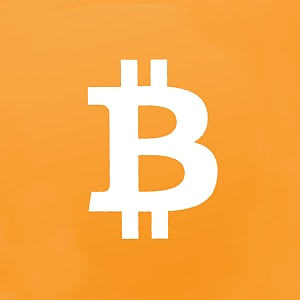- WTI price trades sideways around $68.85 in Friday’s early Asian session.
- The ongoing Russia/Ukraine conflict highlighted risks to Russian oil supplies, which might lift the WTI price.
- OPEC+ postpones its next meeting on output policy to December 5 from December 1.
West Texas Intermediate (WTI), the US crude oil benchmark, is trading around $68.85 on Friday. The WTI price steadies as the escalation in the Russia/Ukraine conflict offsets a less aggressive rate cut expectation from the Federal Reserve (Fed).
Oil traders will closely monitor the developments in the Russia/Ukraine conflict. Any signs of escalation could raise concerns about energy supplies, particularly winter gas flows to Central and Eastern Europe, boosting the WTI price. On Thursday, Russian President Vladimir Putin said that if Ukraine gets nuclear weapons, Russia will use all means of destruction.
Wednesday’s US economic data suggested that the progress on lowering inflation appears to have stalled in recent months, which could diminish the expectation for the Federal Reserve (Fed) to cut interest rates in 2025. However, they expect the Fed will leave rates unchanged at its meetings in January and March. It’s worth noting that slower-than-expected rate reductions would keep borrowing costs high, which could slow economic activity and lower oil demand.
The Organization of the Petroleum Exporting Countries and its allies (OPEC+) postponed its December meeting, fueling speculation about delayed production hikes and supply adjustments. OPEC+, which accounts for about half of world oil output, is scheduled to meet on December 5 after delaying its earlier meeting.
Key considerations include whether to prolong the voluntary production cuts of 2.2 million barrels per day slated to phase out in December. Reports suggest members are considering delaying planned output increases for January amid persistent demand uncertainties. A further delay has mostly been factored into oil prices already, said Suvro Sarkar at DBS Bank. "The only question is whether it's a one-month pushback, or three, or even longer.”
WTI Oil FAQs
WTI Oil is a type of Crude Oil sold on international markets. The WTI stands for West Texas Intermediate, one of three major types including Brent and Dubai Crude. WTI is also referred to as “light” and “sweet” because of its relatively low gravity and sulfur content respectively. It is considered a high quality Oil that is easily refined. It is sourced in the United States and distributed via the Cushing hub, which is considered “The Pipeline Crossroads of the World”. It is a benchmark for the Oil market and WTI price is frequently quoted in the media.
Like all assets, supply and demand are the key drivers of WTI Oil price. As such, global growth can be a driver of increased demand and vice versa for weak global growth. Political instability, wars, and sanctions can disrupt supply and impact prices. The decisions of OPEC, a group of major Oil-producing countries, is another key driver of price. The value of the US Dollar influences the price of WTI Crude Oil, since Oil is predominantly traded in US Dollars, thus a weaker US Dollar can make Oil more affordable and vice versa.
The weekly Oil inventory reports published by the American Petroleum Institute (API) and the Energy Information Agency (EIA) impact the price of WTI Oil. Changes in inventories reflect fluctuating supply and demand. If the data shows a drop in inventories it can indicate increased demand, pushing up Oil price. Higher inventories can reflect increased supply, pushing down prices. API’s report is published every Tuesday and EIA’s the day after. Their results are usually similar, falling within 1% of each other 75% of the time. The EIA data is considered more reliable, since it is a government agency.
OPEC (Organization of the Petroleum Exporting Countries) is a group of 12 Oil-producing nations who collectively decide production quotas for member countries at twice-yearly meetings. Their decisions often impact WTI Oil prices. When OPEC decides to lower quotas, it can tighten supply, pushing up Oil prices. When OPEC increases production, it has the opposite effect. OPEC+ refers to an expanded group that includes ten extra non-OPEC members, the most notable of which is Russia.
Information on these pages contains forward-looking statements that involve risks and uncertainties. Markets and instruments profiled on this page are for informational purposes only and should not in any way come across as a recommendation to buy or sell in these assets. You should do your own thorough research before making any investment decisions. FXStreet does not in any way guarantee that this information is free from mistakes, errors, or material misstatements. It also does not guarantee that this information is of a timely nature. Investing in Open Markets involves a great deal of risk, including the loss of all or a portion of your investment, as well as emotional distress. All risks, losses and costs associated with investing, including total loss of principal, are your responsibility. The views and opinions expressed in this article are those of the authors and do not necessarily reflect the official policy or position of FXStreet nor its advertisers. The author will not be held responsible for information that is found at the end of links posted on this page.
If not otherwise explicitly mentioned in the body of the article, at the time of writing, the author has no position in any stock mentioned in this article and no business relationship with any company mentioned. The author has not received compensation for writing this article, other than from FXStreet.
FXStreet and the author do not provide personalized recommendations. The author makes no representations as to the accuracy, completeness, or suitability of this information. FXStreet and the author will not be liable for any errors, omissions or any losses, injuries or damages arising from this information and its display or use. Errors and omissions excepted.
The author and FXStreet are not registered investment advisors and nothing in this article is intended to be investment advice.
Recommended content
Editors’ Picks

GBP/USD remains heavy below 1.2300 amid UK bond market sell-off
GBP/USD consoldiates near 14-month lows below 1.2300 in European trading on Thursday. The pair bears the brunt of the UK bond market sell-off, with the 10-year Gilt yields at the highest since August 2008. Extended US Dollar strength and a bearish daily technical setup exaerbate its pain.

EUR/USD stays depressed near 1.0300 after Eurozone Retail Sales data
EUR/USD remains on the back foot at around 1.0300 in the European session on Thursday. German Industrial Production and Eurozone Retail Sales data for November fail to lift the Euro amid a sustained US Dollar demand. Fedspeak is next in focus.

Gold price moves back closer to multi-week top; modest USD strength might cap gains
Gold price turns positive for the third straight day and draws support from a combination of factors. Geopolitical risks, trade war fears and retreating US bond yields lend support to the XAU/USD pair.

BNB poised for a decline on negative Funding Rate
BNB price hovers around $696.40 on Thursday after declining 4.58% in the previous two days. BNB’s momentum indicators hint for a further decline as its Relative Strength Index and Moving Average Convergence Divergence show bearish signals.

Bitcoin edges below $96,000, wiping over leveraged traders
Bitcoin's price continues to edge lower, trading below the $96,000 level on Wednesday after declining more than 5% the previous day. The recent price decline has triggered a wave of liquidations across the crypto market, resulting in $694.11 million in total liquidations in the last 24 hours.

Best Forex Brokers with Low Spreads
VERIFIED Low spreads are crucial for reducing trading costs. Explore top Forex brokers offering competitive spreads and high leverage. Compare options for EUR/USD, GBP/USD, USD/JPY, and Gold.